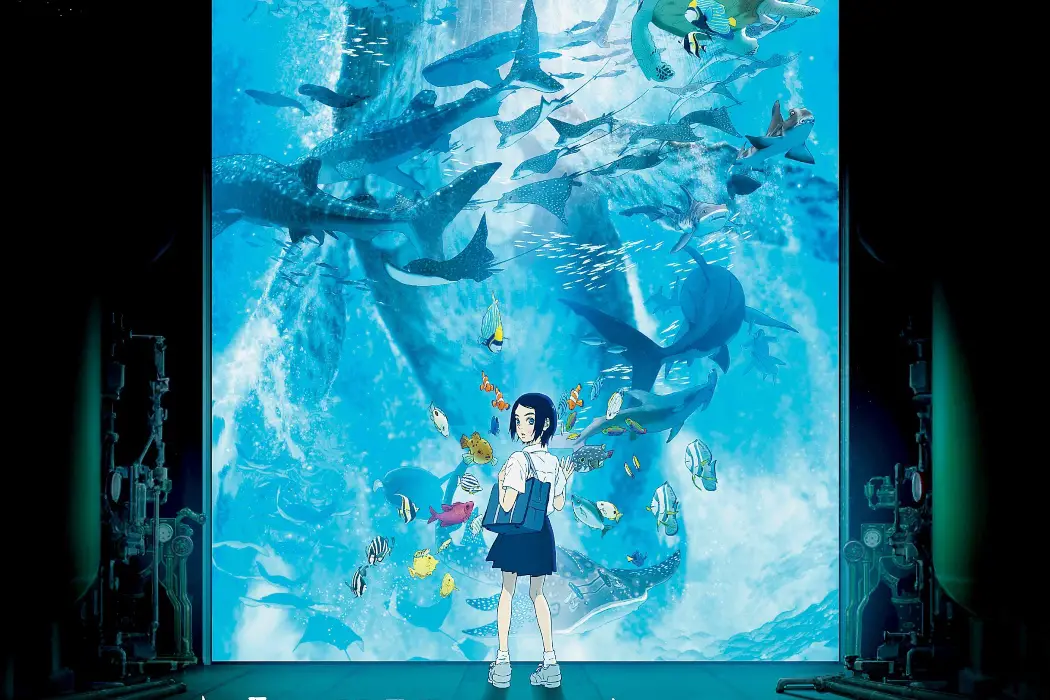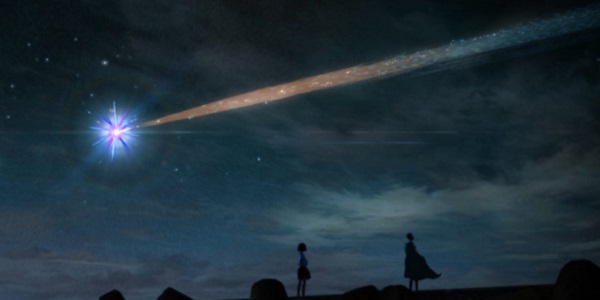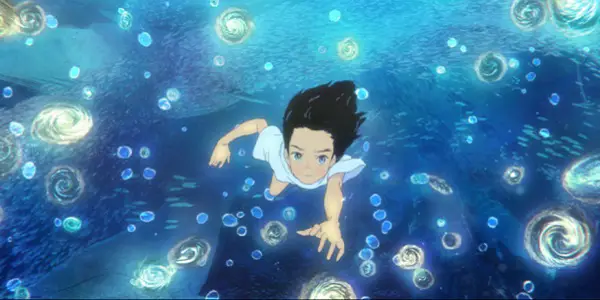CHILDREN OF THE SEA: Beautiful Images, Bewildering Story

Lee Jutton has directed short films starring a killer toaster,…
Director Ayumu Watanabe’s adaptation of a manga by Daisuke Igarashi, who also wrote the film’s screenplay, Children of the Sea is a stunningly beautiful and deeply philosophical story chronicling one young girl’s saltwater-soaked summer. Featuring comets crashing into the sea, boys raised by dugongs, and enough kaleidoscopic imagery to power your next drug trip, Children of the Sea is a masterpiece of animation. However, when it comes to storytelling, the film is far weaker, with the plot sagging under the weight of too many metaphysical questions left unanswered.
Under the Sea
Ruka (voiced by Mana Ashida) is an athletic and energetic junior high school student whose much-anticipated summer takes a turn for the worse when she’s kicked off the handball team for retaliating against an opponent who tripped her by bloodying her nose. Rather than stay at home with her alcoholic mother, Ruka wanders to the aquarium where her father works; it’s a place where Ruka spent much of her childhood, but since her parents split up, she’s largely stayed away.
In the aquarium, Ruka meets an unusual young boy named Umi (Hiiro Ishibashi). Raised by dugongs (a type of sea cow, similar to manatees) alongside his older brother Sora (Seishū Uragami), Umi is being studied by the marine biologists at the aquarium because of his remarkable underwater abilities. Indeed, Umi is far more comfortable in the water than on land, where his skin – so used to being perpetually wet – grows dry and uncomfortable far too easily.

Ruka begins spending a lot of time with Umi, much to the dismay of Sora, who is more focused on a mysterious impending event that has been heralded by a variety of supernatural phenomena, including a comet crashing into the sea and a large variety of sea creatures gathering off the coast of Japan. It’s as though they too are waiting for something. What that is, Ruka is unsure, but one thing starts to become clear to her the more time she spends with the brothers: she has a strange, almost spiritual, connection to the sea too, one that she first sensed in the early days of her childhood.
Eye Candy
The images in Children of the Sea are some of the most gorgeous I have ever seen on screen. A unique combination of CGI and hand-drawn animation in an effort to replicate the artwork of the manga, the degree of detail in each frame is astounding and utterly immersive. When Ruka walks through town and stops to look out at the sea, you can almost smell the salt in the air and feel the sun on your skin. Indeed, the film’s breathtaking use of light, with rays of sun shining through the clouds and the water to illuminate each frame, can make one feel as though one is watching a series of moving watercolor paintings. In close-ups of the characters’ faces, their eyes twinkle with the startlingly clear reflection of the object of their gaze – which is often, of course, the sea, portrayed as a swirling maelstrom of mystery and life that should be treated with a sense of wonder and respect.
And yet, despite being composed of so many marvelous pieces of eye candy, Children of the Sea is largely unsatisfying. The mystery at the film’s center is far too mystical to make much sense and is dragged on for far too long, with the film clocking in at almost two hours; no amount of visual splendor can hold one’s attention span for that length of time when one cannot follow the story. There are some nice messages buried in Children of the Sea about taking better care of our suffering environment and maintaining our spiritual connection with nature, but those are swallowed up by colossal waves of confusion.

If one watched the film without any dialogue and only Studio Ghibli stalwart Joe Hisaishi’s lovely score on the soundtrack, one could appreciate Children of the Sea as a pure audiovisual feast (especially if one partook in some form of substance prior to watching – not saying I condone it, just that it could make for an interesting experience). But by the time the film reaches the psychedelic sequence that comprises the climax, one is left largely bewildered by what has happened, and disappointed in the conclusion.
Conclusion
For the stunning animation alone, Children of the Sea is worth watching, but don’t be surprised if you find yourself drowning in the film’s strange, surreal story.
What do you think? Are you familiar with the manga upon which Children of the Sea is based? Share your thoughts in the comments below.
Children of the Sea is currently available to stream on Netflix in the U.S. It’s also available on DVD and Blu-ray. You can find more international release dates here.
Watch Children of the Sea
Does content like this matter to you?
Become a Member and support film journalism. Unlock access to all of Film Inquiry`s great articles. Join a community of like-minded readers who are passionate about cinema - get access to our private members Network, give back to independent filmmakers, and more.
Lee Jutton has directed short films starring a killer toaster, a killer Christmas tree, and a not-killer leopard. Her writing has appeared in publications such as Film School Rejects, Bitch: A Feminist Response to Pop Culture, Bitch Flicks, TV Fanatic, and Just Press Play. When not watching, making, or writing about films, she can usually be found on Twitter obsessing over soccer, BTS, and her cat.













